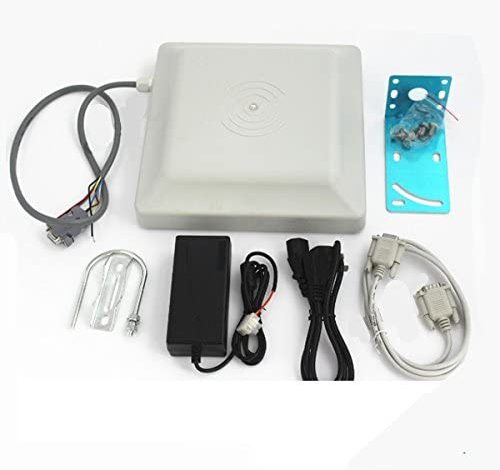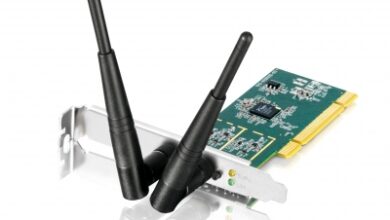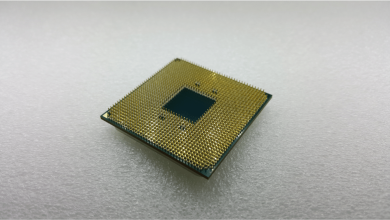What To Consider While Selecting An RFID Reader For Your Work?

There’s no denying that radio frequency identification (RFID) has pushed data collection operations to new heights of speed and efficiency. Without having a direct line of sight, RFID technology can increase data accuracy and collect vast amounts of data. RFID tags can also contain a lot more data than traditional barcodes.
RFID readers are becoming increasingly prevalent in retail and manufacturing businesses. It’s no surprise that RFID readers have increased a company’s productivity. The latest models allow you to do more with the readers, but each has advantages and disadvantages. If your firm is considering buying a new RFID reader, ensure you obtain the proper one for your requirements. Understanding the distinctions between RFID readers might assist you in determining which one is best for your needs.
Types of RFID readers
RFID scanners come in various shapes and sizes, and you may prefer one over the other, depending on your organization. The following are some of the RFID readers that are available.
1. Fixed Readers
Fixed readers feature several ports and provide outstanding performance for a powerful device. They are more potent than other readers and are beneficial for non-mobile applications. Moreover, RFID Reader Manufacturer combines this reader and an antenna into a single unit and utilizes stationary readers. Depending on the team, they can have an extra port, aren’t movable, and have medium to high performance.
2. Mobile Readers
Antennas on the outside of mobile readers are not present. And instead, the antenna is present within the mobile reader. Onboard processing, which enables the reader to run many programs simultaneously, is one of the many functionalities available in mobile readers. They can continue to read while working at a high rate. Mobile readers, such as sleds, come in various sizes that can fit in your pocket. They can use Bluetooth or an auxiliary connector to connect to a smart device. You can download some of the features and applications for various purposes.
3. Integrated Readers
Integrated readers are ideal for small reading zones and best for file tracking or retail. There is an internal antenna and an additional port to connect an antenna, and they’re appealing to the eye, which is beneficial for folks who care about how their instruments appear when they’re in use. You can utilize the reader in whatever way you like and pay extra attention to specific regions. It allows you to take more accurate inventory, determine whether things are in stock, and assist customers in finding what they’re looking for.
What Is The Best Way To Pick The Proper RFID Tag Or Label For Your Project?
There are different tags and labels in the world of RFID Reader manufacturers. But which is the most appropriate for your project? When picking the correct RFID tag/label, you must consider aspects such as the needed performance, the material of the tagged item, the ambient conditions, and more. Your project may fail if you select the incorrect tag. The selection of an appropriate RFID tag is critical to the success of your project. With our ‘How to guide, we’ll walk you through selecting the ideal RFID tag for your project in five easy steps.
1. The surface material of the tagged item
The first and foremost question you must answer is what the tagged item’s surface substance is. Is it made of plastic, wood, glass, metal, or anything else? RFID tags work well on plastic, wood, and cardboard in general.
Metal, glass, and liquids are more difficult to tag than other materials because they can disrupt communication between the RFID reader and the title. It would be best to examine whether a tag is compatible with certain materials when looking for RFID labels.
Tags that function well on metal, glass, or liquid-containing items are frequently more expensive than standard RFID tags or inlays.
2. The environment / the IP rating
The environment can influence the reading results of a tag, and that is why it is critical to assess the environmental circumstances in which you will use the tags.
The following are some questions to consider:
- What environmental conditions under which you can use the tags/labels?
- They need to be scratch and abrasion-resistant, making them perfect for RTI (returnable transit item) use?
- Do they have to be able to withstand a specific temperature?
- Do they need to be able to withstand chemical immersion or a particular range of humidity?
Check the tag’s specifications to ensure they’ll work in your project’s context. Many RFID labels withstand the roughest conditions.
3. The tag’s size and read range
Size does indeed matter. In general, the read range is proportional to the tag size.
If you want a read range of several meters, the appropriate tag will most likely be more significant than if you only need a few centimeters.
However, it would be perfect to consider the marked item’s accessible surface area. You may need a precise form or size to fit a specified space on the tagged item.
Fortunately, RFID tags come in various sizes and forms, so you’ll always be able to find one that fits your needs.
4. Mounting technique
The suitable mounting technique of a tag or label depends upon a few criteria. You know it by the tagged item’s material, design, and surrounding factors.
Some RFID tags and labels have adhesive, while others attach via cable ties, screws, or nails—tag and label attachment methods list in the tag’s datasheet.
5. Type of memory/chip
You can consider the quantity of data stored on a tag or label by its memory size. Most RFID tags have a memory capacity of up to 2 kilobytes, which is more than enough to retain some basic information about the thing they are attached to.
Although most programs do not require additional memory, it is feasible to do so by changing the tag.
Final thought
RFID systems can be very cost-effective, offering benefits and a rapid payback time. However, selecting the right combination of tags and readers is critical to achieving the full benefits. RFID can be complex and advanced, which changes almost every day.
Whichever reader you select, you want to ensure it has the power to address your wants and increase productivity within your operation. You may have more precise needs you’d like to meet with your technology, in which case, you’d need to examine the specifics of each reader.





